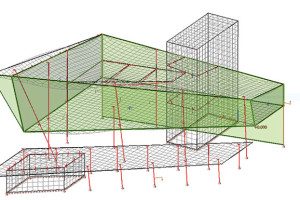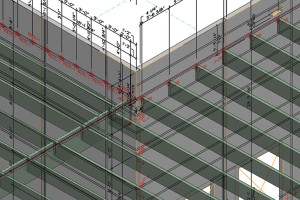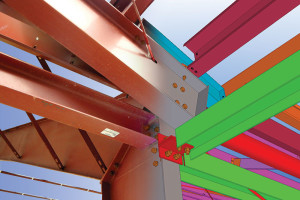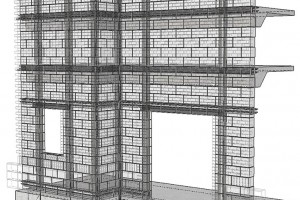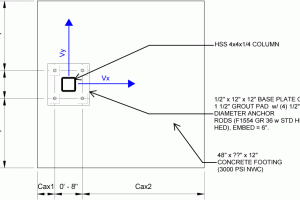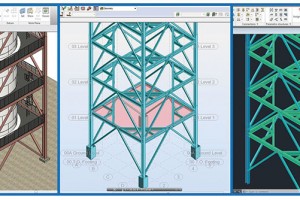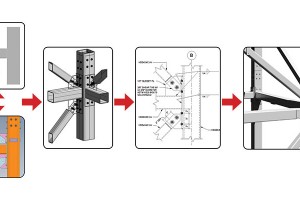Software programs for structural engineers continue to escalate in complexity, as engineers become increasingly reliant on those tools to increase accuracy in analysis and efficiency during design. To solve complex problems efficiently, and to gain a more in-depth understanding of the elements being analyzed, structural engineers are using Finite Element Analysis (FEA). Of course, each of the different FEA programs has their idiosyncrasies, all of which require designers to pay close attention when using these programs. …
Review Category : Technology
The Value Proposition
I remember my first day of work as a young engineer like it was yesterday. The firm where I was starting my career was ceremoniously ditching the teletype machine that had provided them with computing power from a timeshared computer in a remote office building, in downtown Charlotte, NC, in favor of a desktop computer – a Wang SVP. …
At a recent workshop, organized by the University of Sheffield in association with LimitState and held at the IStructE Headquarters in London, the authors of this article presented new computational tools for the limit analysis of reinforced concrete (RC) slabs. The workshop was attended by practising engineers from different fields, including those involved with the design of RC slabs and those with an interest in the assessment of existing RC slabs for changing service loads. …
The value of constructable Building Information Modeling (BIM) to projects is evident, yet it remains a common misconception that structural engineers get the least benefit from it. But, as many structural engineering firms can attest, it doesn’t have to be that way. Instead of following the lead of architects who suggest or require the use of BIM, structural engineers should assume the lead by building “constructable” models that can be used downstream by all subcontractors throughout the life of the project. …
eSPAN140 Facilitates Speedy Concept-to-Completion
In late 2013, Iowa’s Buchanan County engineers teamed with academia and industry to launch the V65 Jesup South Bridge Demonstration Project with the goal of illustrating the advantages of the eSPAN140 short span steel bridge design tool to accelerate steel bridge design and construction. …
The art of bridge design is a time-honored pursuit that, throughout the centuries, has undergone significant advances in engineering and technology as a result of mankind’s passion to conquer the challenges of any given crossing. It has evolved through the acceptance of well-established practices, codes and construction techniques. In fact, when new materials or methodologies are brought to the market, it often takes many years for the techniques to gain inclusion in the modern practice of bridge design. …
What’s Coming for Structural Engineers
It’s been several years since the inception of Building Information Modeling (BIM) in our industry. Substantial progress has been made by the different software developers to provide us with the tools needed to tackle any type of project. As BIM use increases and progresses from design offices to construction trailers and fabrication shops, new needs emerge for the different professions and trades. …
Concrete Capacity Design (CCD) has been a code methodology for anchor design since it was introduced directly into section 1913 of the 2000 International Building Code (IBC). It was initially a strength design option and was limited to cast-in-place anchors only. The CCD method provided better predictions of concrete breakout strengths than the previously common 45-degree cone method. …
The Future of “Single-Source” Structural Engineering
Structural engineering design firms looking for opportunities to increase revenue, which today should include most everybody, should consider looking to our close neighbors on the construction side of the industry for inspiration. Based on the construction business model and the ever-increasing interoperability of today’s Building Information Modeling (BIM) software, today’s structural engineering workflows can be reshaped to take advantage of technology to improve project returns. …
Once in a while, every engineer encounters a project that presents new opportunities for innovation and advancement. Almost seven years ago, it was a small chiller plant that tempted me to dabble with a new software called Revit, which was slowly making its way into our industry. Today, Building Information Modeling (BIM) is a household name in the A/E community where interoperability between documentation, analysis, design, and fabrication models can be achieved. But how close are we really from taking the architectural massing model from concept to fabrication in an efficient manner? I recently had the opportunity to address that question in the design of a 36-foot tall monumental exposed steel tower structure. Once the team decided to step away from traditional design methods and embraced the new technologies, the answers I found were surprising. …

